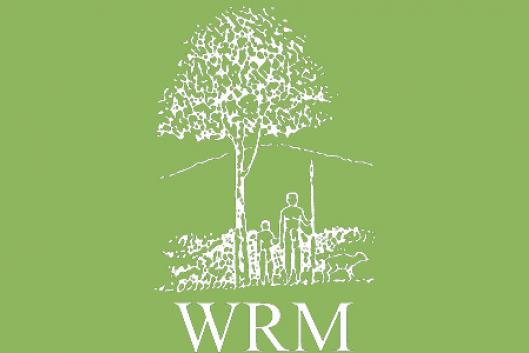I visited Cameroon in December 2006 and again in September 2007. In both trips I was shocked by the sheer number of trucks loaded with huge logs of tropical trees that could be seen on almost any road. Most of them were on their way to the ports from where they would be exported –unprocessed- to mostly northern countries.
Seeing those “ancient forests on wheels” traveling along the roads reminded me of Eduardo Galeano’s book “The open veins of Latin America”. In this case, these are Central Africa’s open veins (Cameroon, Congo, DR, Congo, R., Gabon) and the logs represent the life of Africa’s forests and peoples being mined for northern consumption.
In Cameroon, logging is carried out in an industrial scale by large corporations –national and foreign- linked to foreign capital and export-oriented. Paradoxically, the country appears to be -on paper- quite progressive regarding the promotion of community forest management. In this respect, a community forestry law was passed in 1994 which enables communities to manage their own forests –although with a maximum of 5,000 hectares- under a contract agreed upon with the Ministry of Environment and Forests and valid for 25 years.
However, the government continues to support destructive and lucrative industrial logging, and has apparently no intention of substituting it by community forest management. A visit made to a community forest proved the point.
On 12 September we visited the COVIMOF (Communauté Villageoise de Melombo, Okekak, Fakele 1&2, Ayos et Akak.) community forest, where the first thing we learnt was that the process for approval of community forest management is very slow. In this case, the five communities involved started the process in 1996 and only in 2004 they managed to comply with all the requirements for the approval and signing of the necessary legal agreement. They complain that even now, when they present the annual management plan, the Forestry Department takes months to approve it, which means that the community is left with a very short period of time (1-2 months) to implement it.
A second lesson is that communities are on their own regarding protection against illegal logging in their forest. While the community was still waiting to receive authorization to begin forestry operations, a group of illegal loggers started cutting trees in the community forest. The relevant authorities were informed but no action was taken. Later on the loggers came back with heavy machinery and piled up the illegal logs beside a road. Pictures and videos of the operation were made available to local authorities, but nothing happened. Finally, the logs were loaded on trucks and taken away –passing through a government forestry control post- without any problems.
Forest restoration is another activity where communities cannot count on government support. This community forest had been already “creamed” of the best trees by previous logging activities. The local people are now replanting native trees, but with no government support. They have established a small tree nursery where they are producing some 5,000 saplings of 12 tree species. Last year they planted more than1000 trees, with support from CED (Centre pout l’environnement et le développement) and Greenpeace.
A third lesson is that they are also on their own in harvesting, transport, industrialization and commercialization of wood. Technical support and training is not provided by government but by civil society organizations such as CED. The machinery for transforming logs into lumber has also been acquired with NGO support, but much more would be needed for improving the current industrialization process. Commercialization is difficult and subject to frequent abuses from buyers. In all this the government is totally absent.
This example seems to show that in Cameroon community forests need some type of outside support, in this case provided by NGOs. However, NGOs lack the capacity to support many such cases and this role should be played by government agencies. For this to happen there is one basic necessary condition: the government’s political will to shift from industrial logging to community forestry. This is the main issue, which implies seeking answers to the crucial question of how to begin a process for achieving changes in that direction. Success stories –and even failures- from existing community forests can be extremely useful as part of that process.
In the case of the COVIMOF community forest, it is important to stress that, in spite of all the problems, the local people are proud and happy about their achievements. Most of them can already show a technical skill in some forestry-related activity which they lacked before. They are committed to using the forest in a sustainable way and to equitably share the benefits. In their hands, the forest has a real chance of being protected.
By Ricardo Carrere, based on observations and interviews made during a field trip in Cameroon, September 2007
